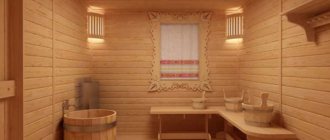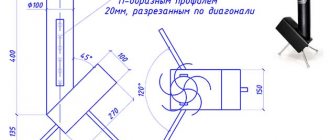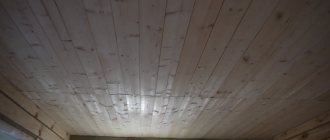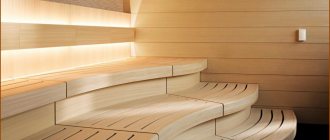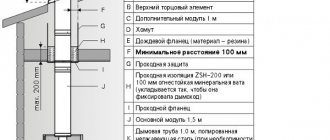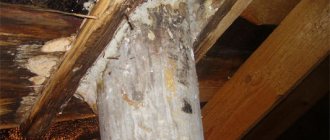Open waters. The container is located in an open space without a protective structure.
Indoor swimming pools. They are located inside a room built from lightweight materials. It protects the container from debris, falling leaves, and cold wind.
Both types of reservoirs have one drawback: at certain times the water is not at a sufficient temperature for swimming. A solar collector system for a swimming pool is suitable for heating water.
Operating principle of solar collectors for swimming pools
There are several types of collectors, differing in design.
However, they all work on the same principle:
- The storage element absorbs energy from the sun. It is designed on the principle of a heat exchanger. The circulating liquid warms up from the absorbed solar heat.
- Water heated by solar energy is discharged into the pool. A new portion of liquid enters the heat exchanger from the bowl.
- The closed cycle of water circulation occurs continuously. The circulation pump is responsible for this part of the work. The system operates as long as there is sunlight.
Solar collectors are not able to provide full heating of a swimming pool. Firstly, their effectiveness increases only in the summer, when the weather is hot outside. Secondly, collectors are capable of compensating for a maximum of 40% of the energy consumption used to generate heat.
Advice! The equipment will approximately halve the cost of heating water if the pool is covered with an awning or any other type of cover for the time when it is not in use.
Effective thermal insulation to retain heat
Thermal insulation of a pool is a layer of backing that cuts off the contact of the film with cold concrete or soil. Different materials are used, from ordinary polystyrene foam or more reliable penoplex to liquid polyurethane foam.
It is a liquid that is applied by spraying. In air, the composition foams and hardens, forming a continuous hard layer of insulation. The procedure is quite complicated and requires the use of special equipment. However, the result gives maximum effect.
Such thermal insulation can last 50 years or more.
Pros and cons of heating a pool with solar collectors
Before installing solar energy storage equipment, you need to weigh its advantages and disadvantages.
Pros:
- The cost of pool storage equipment is affordable to the average buyer. Collectors can be purchased at a low cost.
- The simplicity of the device allows you to independently create collectors from plastic pipes.
- The volume of water heated by solar energy can be adjusted independently. The scheme is simple: the more collectors, the more liquid they can heat.
- Battery devices are easy to use. There is no need to invite specialists to connect to the system.
Of the shortcomings, only two indisputable facts stand out. It is impossible to organize full heating of a swimming pool with a solar collector. In addition, its effectiveness decreases in cloudy or cold weather.
Fabric preparation
The canvas is made from slats or beams. A frame is constructed and covered with plywood. The sheet is visually divided into four parts and wooden beams are attached. In the future, they will hold the glass. Insulation and galvanized sheets are laid on top of the plywood. The front of the table is covered with black paint. This will attract light more strongly and heat the surface. The canvas itself is attached to the frame.
IMPORTANT! The weight of the entire device can reach up to 35 kg, so the entire frame should be made durable and able to easily withstand such a weight. It is necessary to take into account the weight of glass, snow, water, the impact of wind on the structure, etc.
Types of solar collectors for heating pool water
Conventionally, all storage devices are divided into two types:
- Open collectors differ in the location of the absorber. Rubber or plastic hoses are fixed to a base not covered with glass. Solar systems are effective only in hot sunny weather and are more often used to heat a private pool.
- For closed collectors, the absorber is hidden under glass. The design allows to reduce heat loss. Closed-type solar water heating devices can operate in cold weather, as long as they receive sunlight.
Open and closed solar collectors differ in the design of the storage element. The performance of the equipment similarly depends on its design.
Tubular-type vacuum solar systems have special glass flasks as a storage element. Depending on the design, they come with one or two walls. The air has been completely pumped out of the flask. Artificially created vacuum is an excellent heat insulator. Inside the glass flask with a vacuum there is a copper heat exchanger tube through which water from the pool circulates.
In one solar collector, a set of glass flasks with copper tubes is connected to the main unit - the distributor. The module helps mix flows, directs heated water into the pool, and takes cold liquid from the bowl.
Solar vacuum solar collectors are capable of heating the water in the pool even with the onset of cold weather. However, their effectiveness is halved. In clear sunny weather in late autumn, the collector compensates for a maximum of 20% of the energy consumption used to generate heat.
Advice! An installed solar vacuum collector for an indoor pool can provide a swimming season from mid-spring to the end of October.
Panel collectors look like a window, only with dark glass. The device for heating water in the pool consists of an aluminum body. A heat exchanger made of a set of tubes is installed inside. They come in copper or aluminum. The heat exchanger is in contact with a selectively sprayed metal panel. The storage element is covered with dark glass on top.
The water in the heat exchanger heats up faster due to solar heat reflected by the metal plate. From copper or aluminum tubes, it flows into the pool through forced circulation. Panel-type collectors are effective in sunny, hot weather. To heat a pool, they are more often used in the south or in areas with a temperate climate. After the onset of cold weather, the efficiency of the solar collector is greatly reduced.
Pyramid-type collectors are designed for domestic use. The equipment is effective with small inflatable and frame pools. In hot sunny weather, pyramidal solar collectors are capable of maintaining water temperatures in the range from + 23 to + 25 °C.
In a pool system, the collector is connected to a pumping station. The water is heated inside the absorber, the role of which is played by a hose with a cross section of 25-40 mm wound around the base. A mirror reflector of sunlight is installed under the storage device. The hoses are usually covered with a transparent cap on top.
Of all the existing types, the pyramidal-type pool collector is the one most often assembled with your own hands. This is due to the simplicity of the device and compactness. In addition, by winding the hose in a pyramid, the productivity of the equipment increases.
A flexible solar collector is made of elastic materials, rubber is most often used. Outwardly, it resembles a rug. The solar collector is only of the open type. It is most often used with mobile inflatable pools. The mat rolls up easily. Together with the deflated pool bowl, the collector can be easily transported in the trunk of a car to the dacha.
The rate of water heating depends on the area of the solar collector. For each pool, a mat is individually selected according to size. The product is placed in a sunny place and connected with hoses to the font pumping system.
Popular manufacturers of electric heaters
Some companies specializing in the production of swimming pools and equipment for them have already received a large number of positive reviews. When choosing a heater, it is recommended to pay attention to the products of the companies listed below.
Pahlen
Pahlen is a Swiss company that produces heaters with a power of up to 18 kW. The devices are capable of heating the temperature in the pool up to +40 °C and are characterized by a high degree of safety and reliability. The devices are equipped with overheating protection, which is triggered when the temperature rises to +60 °C. The most powerful devices in the line of this company require increased network voltage - 380 V.
Pahlen produces heaters with power up to 18 kW.
Bestway
Bestway is a joint American-Chinese production company specializing in the production of low-power heaters suitable for maintaining water temperature in small swimming pools. Energy consumption is only 3 kW.
The heaters are low-power, but with proper operation they can increase the water temperature in a small pool to +35 °C. Most models have a protected heating element installed that can increase the heating rate.
Budget devices do not have a thermostat, so you need to independently control the water temperature.
Intex
Intex is an American company that produces a large number of electric, solar, heat exchange and fuel heaters. The devices vary in power. Both high-quality stainless steel and durable plastic are used as the material for the internal tank and body.
Intex produces a large number of solar heaters.
The heaters of this company have a high degree of safety. They are often equipped with fuses against overheating and short circuits. In addition, most models have a thermostat, making it easier to control the temperature.
Electro
Elecro is an English company that produces electric heaters and heat exchangers for all types of swimming pools. The power of the devices ranges from 3 to 18 kW. Elecro heaters are made from durable materials and therefore have a long service life. The devices are economical. Most models can be mounted in both horizontal and vertical planes.
How to make a solar collector for heating a swimming pool with your own hands
Despite the simplicity of the device, a flexible or pyramidal household collector costs around 20 thousand rubles. If you separately calculate the costs of purchasing components, then making a solar collector for a pool will cost 6-7 thousand rubles.
The main expense will be to purchase a hose. First you need to calculate its length and thickness. Typically, water in a pool system circulates at a speed of 0.4 to 0.7 m/s. With these parameters, 1 m of hose with a cross-section of 25 mm can produce 3.5 liters of hot water per hour on a hot sunny day. Using this performance indicator as a basis, the total length of the hose is calculated taking into account the volume of water in the pool.
Important! The calculations will always be approximate, since water heating is affected by the outside air temperature, the intensity of use of the pool, the presence of a bowl cover and other nuances.
The easiest way to assemble a solar collector for a pool is from black HDPE pipes. It is optimal to give preference to an open pyramidal design. The pipe is bought in black color to better attract solar energy. Light shades reflect sunlight. For example, in a blue pipe the water will warm up more slowly.
Advice! When purchasing HDPE pipes, you need to make sure that there is a longitudinal blue stripe on the black walls. The marking indicates that the plastic is not technical, but is suitable for drinking water.
The frame of the collector is a pyramid made of timber. To make it, take a square piece of plywood with an area of 1 m2. The stand is fixed in the center. From the corners of the plywood to the top of the support, inclined elements made of timber are installed. The resulting pyramid resembles a stand for a Christmas tree. A HDPE pipe is wound in a spiral onto the finished structure. A gap of about 1.5 cm is left between each turn. The pipe is fixed to the inclined elements of the pyramid with clamps. The fasteners will prevent the coils from moving out. The ends of the pipe are connected to the pool pumping system.
Advice! To increase the efficiency of a homemade collector, any foil material is glued to the plywood base. The reflector will direct the sun's rays onto the hose.
The video shows an example of a solar collector:
To make a closed type solar collector for an outdoor pool, you need to perform the following steps:
- Choose a place for a panel solar collector as close as possible to the pool in a sunny area. The front of the storage device should face south. The selected area is cleared of grass and the turf layer is removed with a shovel. The bottom of the pit is covered with geotextiles and filled to ground level with sand and crushed stone. A platform of paving slabs is laid on top of the cushion and covered with any waterproofing material.
- A frame is assembled from a beam with a cross-section of 50x50 mm, which will act as the frame of the box. There will be a pipe inside here. The lower part of the frame is covered with plywood. With this plane the box will be directed to the north.
- The shield frame is reinforced with mounting corners. Similarly, protrusions are installed from these elements, for which the manifold hose will be fixed. A frame is assembled from timber for vertical installation of the shield. Place it on a prepared site. A shield is attached to the frame with the back side covered with plywood.
- Slats are attached along the perimeter of the frame on the front side. They must have grooves for glass. The entire shield is painted black. A black hose is placed inside the shield. The distance between each line is maintained at 4.5 cm. The hose is fixed to pre-prepared protrusions with clamps or plastic holders. It will not be possible to bend the pipe at a steep angle to fit it into a box. It is cut into pieces, and shaped elements are used for connection: corners, couplings.
- After installation, the manifold hose is connected to the pool pumping system and a hydraulic test is carried out. If everything is fine, proceed to glazing. For these purposes, it is optimal to use glass. If it is not available, polycarbonate will do, but its transparency is less, which will reduce the efficiency of the collector.
After glazing, you can heat the water in the pool using a self-assembled solar collector. The system starts by manually turning on the pump. If desired, you can install automation with temperature sensors.
On a hot sunny day, the water inside the hose of the storage device will warm up to a temperature of + 70 °C. In approximately 4-7 hours of circulation, the water in the pool will warm up to + 25 °C. However, these figures are approximate. The heating temperature depends on the volume of the pool and the size of the collector.
Classification according to temperature criteria
There are quite a large number of criteria by which certain solar system designs are classified. However, for devices that can be made with your own hands and used for hot water supply and heating, the most rational option would be to separate them by type of coolant.
So, systems can be liquid and air. The first type is more often applicable.
In addition, a classification is often used based on the temperature to which the working components of the collector can be heated:
- Low temperature. Options capable of heating the coolant up to 50ºС. They are used to heat water in irrigation tanks, in bathtubs and showers in the summer and to improve comfortable conditions on cool spring-autumn evenings.
- Medium temperature. Provide a coolant temperature of 80ºС. They can be used to heat rooms. These options are most suitable for furnishing private homes.
- High temperature. The coolant temperature in such installations can reach up to 200-300ºС. They are used on an industrial scale, installed for heating production workshops, commercial buildings, etc.
High-temperature solar systems use a rather complex process of transferring thermal energy. In addition, they occupy an impressive amount of space, which most of our lovers of country life cannot afford.
The manufacturing process is labor-intensive, and implementation requires specialized equipment. It is almost impossible to make such a version of a solar system on your own.
It is quite difficult to make high-temperature solar panels using photovoltaic converters at home
Operating rules
To obtain effective heating of a pool with a solar collector, it must be used correctly. There are a number of rules that it is advisable to follow:
- The optimal location for installing storage equipment is the roof of the building, but as close as possible to the pool.
- The solar collector works more efficiently when positioned horizontally. Vertical installation is allowed, but with a maximum inclination of 30 degrees.
- The supply pipes are located higher in relation to the return pipeline. This is due to the fact that according to the law of physics, hot water is directed upward.
- The front side of the storage device is always located on the south side. A maximum deviation of 45° is allowed.
- If the area is illuminated by the sun for less than 5 hours during the day, then it is not suitable for installing a collector.
At the end of the swimming season in the pool, the remaining water is drained from the storage device. You cannot leave the liquid, as in winter it will freeze and rupture the tubes.
What you will need for assembly
The most expensive design of a homemade solar collector for heating water is a device with a power of up to 2000 W. To assemble it, you will need the following materials:
- metal-plastic pipes;
- wooden box;
- frame. It will be used to secure a wooden box on it in the required position;
- black paint;
- protective surface. It is best to use glass.
Part of the required materials
Also, if you decide to make such a collector for heating water entirely with your own hands, then you will also need a small pump.
Models on the market, prices
Manufacturers of inflatable and frame pools produce a wide range of equipment and accessories for them, including devices for heating water using solar energy.
Intex Solar Mat
Flexible mat Solar Mat (28685) 120x120 cm for holding tanks with a filtration system . The circulation pump model is selected based on the number of mats in the solar system (from 1 to 5). Flexible manifold price: from 1800 rub.
Bestway
Flexible mat (art. 58423) 110-171 cm made of polyvinyl chloride. Connects to a cartridge or sand filter-pump of the pool. The heating area is 1.46 m2. Price: from 5000 rub.
Poolmagic
The range of heaters includes:
- Panel SP06305 (32396) . Flexible mat 305x60 cm made of polymer material. Price: from 7500 rub.
- Spiral 1500 (32394) . Pyramid heater made of polypropylene with a protective dome and base made of UV-stabilized polycarbonate. The diameter of the dome base is 58 cm. Price: from 8800 rubles.
- Poolmagic SSR (32308) . Pyramid model with a diameter of 59 cm and a height of 28 cm. Made of PVC, a protective transparent cover is provided. Price: from 12500 rub.
- Curve 3900 (32395) . Heater in the form of a rigid curved panel 110x69 cm on a support. It functions similarly to a mat, is made of HDPE and has a polycarbonate lid. Price: from 11,000 rub.
Azuro
The manufacturer produces flexible mats of different sizes:
- 300x120 cm (3EXX0162),
- 450x120 cm (3EXX0161),
- 300x60 cm (3EXX0159) and 600x60 cm (3EXX0158).
The price depends on the dimensions, the presence of a support and shut-off valve in the kit and ranges from 16,000 to 49,000 rubles.
Also:
- Shelter (3EXX0165) . A flexible mat 120x90 cm is installed on a support in the form of an arch. Price: from 15,000 rub.
- LUX 800 Supreme (3EXX0259) . Rigid curved panel 119x76 cm made of polymer material with protective glass and support. Price: from 14,000 rub.
- Pyramid Spiral (3EXX0052) . A pyramidal model with a base of 120x80 cm and a height of 40 cm, equipped with a protective dome made of polycarbonate. The cascade can include up to 4 heaters. Price: from 29,000 rub.
Kokido
Pyramid solar heaters from Kokido with a protective transparent dome Keops (K835CBX) (57x57x32 cm) and Keops II (K849WBX) (81x81x42 cm). The solar system can include up to 4 heaters. Price: from 11,000 rub.
Sunheater
Flexible solar heater from Sunheater (art. 30065) made of polymer material 600x60 mm. Price: from 18,000 rub.
System requirements
Wood burning
Water is the environment in which the human body relaxes and rests in the best possible way. But, in addition, it is in such conditions that there is a danger of getting injured, which can become disabling. For this reason, the heating system must meet the basic requirements:
- relatively high heating rate;
- good insulation in case of electric current;
- minimal implementation costs;
- safety from an environmental point of view;
- possibility of continuous use;
- ease of self-assembly;
- availability of all components;
- absence of complex mechanisms;
- ease of repair.
In most cases, it will not be possible for a particular mechanism to meet all of the above points, but if at least 80% of them are covered, then such a solution can be considered very productive.
